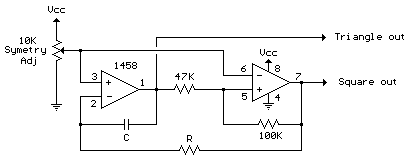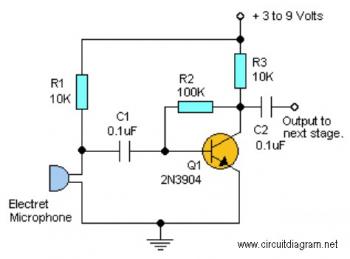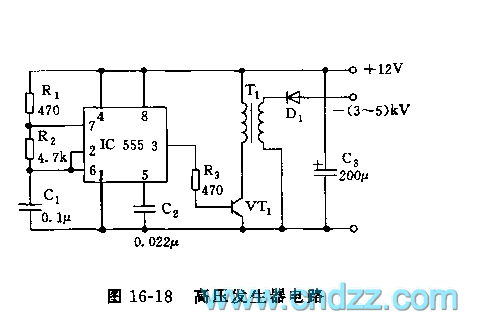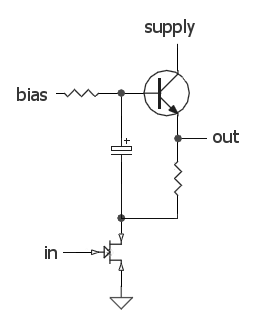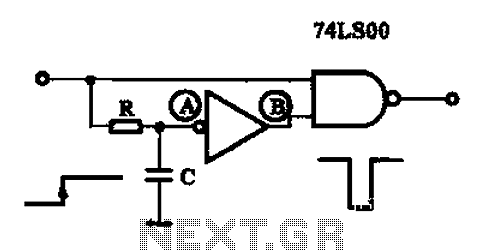
Simple RF Signal Generator
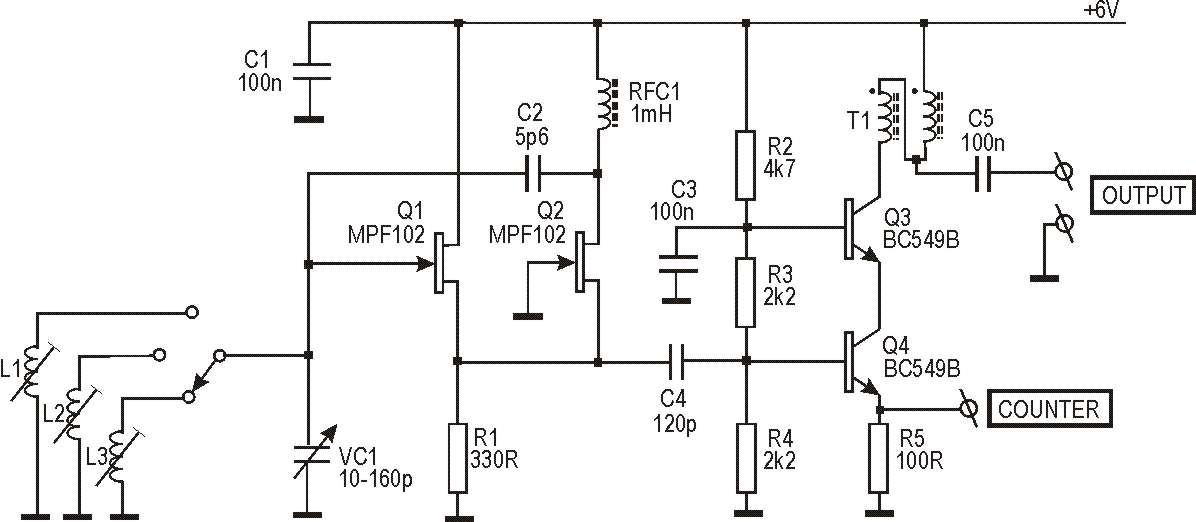
This circuit originated from work on two antenna analyzers, which are detailed elsewhere on this site. Both instruments incorporate an RF signal generator that serves as the signal source for driving the impedance bridge and detectors used to measure impedance. The final designs of the instruments featured somewhat different oscillator configurations due to conflicting design considerations. The signal generator described here is simpler and relatively easy to construct. It is based on the Franklin oscillator configuration, which is less commonly known compared to other oscillator types such as the Colpitts or Hartley. This configuration is also referred to as a "source-coupled FET oscillator" in various publications. The oscillator utilizes two active devices. While some designs incorporate two capacitors for coupling into and out of the resonant circuit, this circuit only requires a single capacitor. The core of this Franklin oscillator is a straightforward two-FET circuit, functioning as a two-stage amplifier with feedback. The first stage, configured as a common drain FET, is followed by a common gate FET in the second stage. The first stage provides high gain with a high input impedance, minimizing loading on the oscillator's tuned circuit components. The coupling capacitor typically has a small value, generally less than 10 pF. The second common gate FET stage does not provide voltage gain; its low input impedance allows it to be fed from the source resistor of the first FET. The output from this stage feeds back into the circuit to sustain oscillation, and its high output impedance further minimizes loading on the tuned circuit. This is enhanced by an RF choke, which presents high impedance at RF frequencies while maintaining low DC resistance for supplying power to the second FET. This oscillator can operate beyond 3 GHz with appropriate devices. The design minimizes additional capacitance in parallel with the tuned circuit, maximizing the tuning range from the variable capacitor and potentially reducing the number of oscillator ranges needed. In the prototype, the tuning range of 450 kHz to 60 MHz is achieved with just three ranges. The RF choke poses a challenge, as it does not provide perfect high impedance across the entire RF spectrum of the oscillator. Variations in oscillator output levels may be attributed to this component. If issues arise during construction, experimenting with different brands or values of RF chokes, or using multiple chokes in series or parallel, may help. The oscillator's output is taken from the source resistor of the first stage and routed to a cascade buffer stage using a pair of transistors. Although Q3 and Q4 are depicted as BC548B transistors, the performance can be enhanced above 30 MHz by using superior transistors such as the 2N2222. The cascade arrangement of Q3 and Q4 somewhat mirrors the first stage circuit. This buffer stage does not incorporate feedback, and the output is delivered through a 4:1 wideband transformer. For increased output, the transformer can be wound as a 9:1 transformer using three windings instead of two. In the prototype, the transformer was constructed by winding seven bifilar turns onto a small ferrite bead. Ferrite beads, which are approximately 4 to 5 mm long and 3 mm in diameter, have a central hole, resembling miniature cylinders. Selecting a bead with a larger hole simplifies the winding process.
The Franklin oscillator circuit is an efficient design that leverages FET technology to produce stable RF signals suitable for various applications, including antenna analysis. By employing a common drain configuration for the first stage, the circuit achieves high input impedance, which is crucial for interfacing with sensitive measurement equipment without affecting the circuit's performance. The use of a common gate configuration in the second stage allows for effective feedback while ensuring that the oscillator's output remains robust and stable.
The choice of components is paramount; employing high-frequency capable transistors can significantly enhance performance, particularly in applications that demand operation above 30 MHz. The transformer design is also critical, as it not only matches impedance but also influences the overall bandwidth and efficiency of the oscillator. The winding technique, such as bifilar winding on a ferrite core, plays a role in reducing parasitic capacitance and improving signal integrity.
In summary, the Franklin oscillator presents a practical solution for RF signal generation, characterized by its simplicity and effectiveness. The design considerations detailed herein provide a roadmap for successful implementation, ensuring that the oscillator meets the demanding requirements of modern RF applications.This circuit came out of some work I did for the two antenna analysers which are described elsewhere on this site. Those instruments both include an RF signal generator. This is used as the signal source to drive the impedance bridge and detectors used to measure impedance.
Those instruments ended up with somewhat different oscillator designs due to other conflicting design issues. The signal generator outlined here is much simpler, and quite easy to build. The design is based around the Franklin oscillator configuration. This is perhaps not as well known as other types of oscillator, such as the Colpitts or Hartley. This is also called a "source-coupled FET oscillator" in some books and articles. This oscillator, shown in outline form above, uses two active devices. Some designs I`ve seen use two capacitors to couple into and out of the resonant circuit, but in practice, only a single capacitor is actually required with this circuit. This simple two-FET circuit forms the heart of this Franklin oscillator. It`s really a two-stage amplifier with feedback. A common drain FET first stage is followed by a common gate FET second stage. The first stage gives high gain with a high input impedance to minimise loading on the oscillator`s tuned circuit components.
The coupling capacitor is usually a small value, typically less than 10 pF. The second common gate FET stage has no voltage gain. The low input impedance of this stage permits the stage to be fed from the first FET`s source resistor. The output of this stage provides the feedback loop to permit oscillation, and since the output impedance of this stage is high, this minimises loading again on the oscillator`s tuned circuit.
This is enhanced to some extent by the use of an RF choke which is a high impedance at RF but with low DC resistance for supplying DC to the second FET. This oscillator will operate, with suitable devices, beyond 3 GHz. This is discussed in more detail in Reference 1. The nice feature of this arrangement is that there is minimal additional capacitance in parallel with the tuned circuit.
This maximizes the tuning range possible from the variable capacitor tuning the oscillator and can, if desired, minimise the number of oscillator ranges required. In the prototype, the entire tuning range of 450 kHz to 60 MHz is covered in just three ranges. The RF choke presents something of a challenge. RF chokes do not present the desired perfect high impedance across the entire RF range covered by the oscillator!
Some minor variation of oscillator output levels can be traced to this part. If you experience problems when building this oscillator, try a different brand or value of RF choke, or even a pair of RF chokes in series or in parallel. The oscillator`s output is taken from the source resistor of the first stage, and goes to a cascade buffer stage using a pair of transistors.
Although Q3 and Q4 are shown as BC548B transistors, performance will be somewhat improved above 30 MHz if better transistors such as the 2N2222 are used. The cascade arrangement of Q3 and Q4 mirrors the circuit of the first stage to some extent. There is no feedback in this buffer stage, of course, and the output is delivered via a 4:1 wideband transformer.
If a little more output is desired, it is possible to wind this transformer as a 9:1 transformer using three windings rather than two. In the prototype, I made this transformer by winding 7 bifilar wound turns onto a small ferrite bead.
(Right click on the diagram to the left to see the full details) For those needing a little more information, first get a ferrite bead. These are about 4 to 5 mm long and about 3 mm in diameter. Ferrite beads have a single hole through the centre, so they look like miniature cylinders. Some seem to have smaller holes than others, so if you have a choice, use the bead with the largest hole.
This makes winding the transformer a little easier. Now ge 🔗 External reference
The Franklin oscillator circuit is an efficient design that leverages FET technology to produce stable RF signals suitable for various applications, including antenna analysis. By employing a common drain configuration for the first stage, the circuit achieves high input impedance, which is crucial for interfacing with sensitive measurement equipment without affecting the circuit's performance. The use of a common gate configuration in the second stage allows for effective feedback while ensuring that the oscillator's output remains robust and stable.
The choice of components is paramount; employing high-frequency capable transistors can significantly enhance performance, particularly in applications that demand operation above 30 MHz. The transformer design is also critical, as it not only matches impedance but also influences the overall bandwidth and efficiency of the oscillator. The winding technique, such as bifilar winding on a ferrite core, plays a role in reducing parasitic capacitance and improving signal integrity.
In summary, the Franklin oscillator presents a practical solution for RF signal generation, characterized by its simplicity and effectiveness. The design considerations detailed herein provide a roadmap for successful implementation, ensuring that the oscillator meets the demanding requirements of modern RF applications.This circuit came out of some work I did for the two antenna analysers which are described elsewhere on this site. Those instruments both include an RF signal generator. This is used as the signal source to drive the impedance bridge and detectors used to measure impedance.
Those instruments ended up with somewhat different oscillator designs due to other conflicting design issues. The signal generator outlined here is much simpler, and quite easy to build. The design is based around the Franklin oscillator configuration. This is perhaps not as well known as other types of oscillator, such as the Colpitts or Hartley. This is also called a "source-coupled FET oscillator" in some books and articles. This oscillator, shown in outline form above, uses two active devices. Some designs I`ve seen use two capacitors to couple into and out of the resonant circuit, but in practice, only a single capacitor is actually required with this circuit. This simple two-FET circuit forms the heart of this Franklin oscillator. It`s really a two-stage amplifier with feedback. A common drain FET first stage is followed by a common gate FET second stage. The first stage gives high gain with a high input impedance to minimise loading on the oscillator`s tuned circuit components.
The coupling capacitor is usually a small value, typically less than 10 pF. The second common gate FET stage has no voltage gain. The low input impedance of this stage permits the stage to be fed from the first FET`s source resistor. The output of this stage provides the feedback loop to permit oscillation, and since the output impedance of this stage is high, this minimises loading again on the oscillator`s tuned circuit.
This is enhanced to some extent by the use of an RF choke which is a high impedance at RF but with low DC resistance for supplying DC to the second FET. This oscillator will operate, with suitable devices, beyond 3 GHz. This is discussed in more detail in Reference 1. The nice feature of this arrangement is that there is minimal additional capacitance in parallel with the tuned circuit.
This maximizes the tuning range possible from the variable capacitor tuning the oscillator and can, if desired, minimise the number of oscillator ranges required. In the prototype, the entire tuning range of 450 kHz to 60 MHz is covered in just three ranges. The RF choke presents something of a challenge. RF chokes do not present the desired perfect high impedance across the entire RF range covered by the oscillator!
Some minor variation of oscillator output levels can be traced to this part. If you experience problems when building this oscillator, try a different brand or value of RF choke, or even a pair of RF chokes in series or in parallel. The oscillator`s output is taken from the source resistor of the first stage, and goes to a cascade buffer stage using a pair of transistors.
Although Q3 and Q4 are shown as BC548B transistors, performance will be somewhat improved above 30 MHz if better transistors such as the 2N2222 are used. The cascade arrangement of Q3 and Q4 mirrors the circuit of the first stage to some extent. There is no feedback in this buffer stage, of course, and the output is delivered via a 4:1 wideband transformer.
If a little more output is desired, it is possible to wind this transformer as a 9:1 transformer using three windings rather than two. In the prototype, I made this transformer by winding 7 bifilar wound turns onto a small ferrite bead.
(Right click on the diagram to the left to see the full details) For those needing a little more information, first get a ferrite bead. These are about 4 to 5 mm long and about 3 mm in diameter. Ferrite beads have a single hole through the centre, so they look like miniature cylinders. Some seem to have smaller holes than others, so if you have a choice, use the bead with the largest hole.
This makes winding the transformer a little easier. Now ge 🔗 External reference
